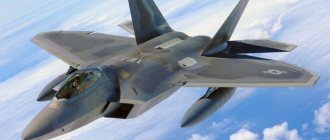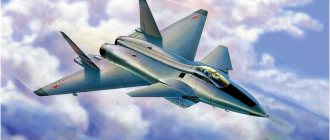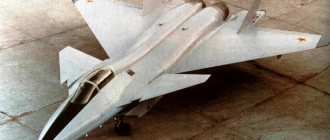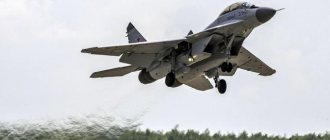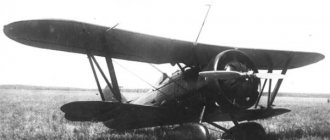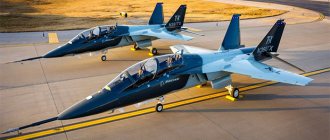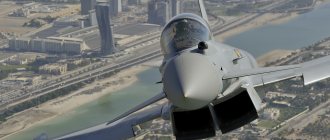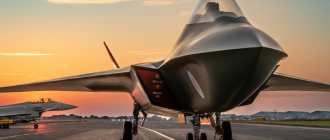The Chinese 5th generation military fighter according to the Western classification Chengdu J-20 is the newest combat aircraft of the PRC. Despite the fact that its production has not yet been fully completed, we can say with confidence that the latest improvements are being made in this regard, and most likely, as expected, the new combat fighter will enter the Chinese Air Force in 2022.
It is worth noting that the Chinese authorities do not hide the fact that they are engaged in developments in this area, especially since the first photographs of the new aircraft appeared back in 2010.
Development of the Chengdu J-20 fighter, or as it is also called “Black Eagle,” began back in 2002. In 2010, the first flight tests of the new combat air vehicle took place, however, according to a number of media outlets, the government of the country was not completely satisfied with the qualities and characteristics of the Chengdu J-20 fighter, and therefore gave it time for improvement. In 2012, about 60 test flights took place, which showed that the aircraft is indeed very effective in flight and does not cause any difficulties in its control.
As it became known, the Chinese 5th generation combat fighter uses Russian aircraft engines, but if they were not suitable for the project to create a Russian combat aircraft of the MiG 1.44 type, they became practically native for the Chinese military aircraft.
There is also information that the Chinese 5th generation combat fighter Chengdu J-20 will be inconspicuous to radar systems, as evidenced by its shape, which is similar to the shape of the American military fighter F-22. The country's authorities also report that their new aircraft will be more efficient than the American F-22, but in terms of its cost it will be 15-20 percent cheaper.
Most of the data on the creation of the Chinese 5th generation fighter is classified, and at the moment there is no information about the armament of the new aircraft.
The Chinese government is currently actively committed to increasing the combat power of its army. First of all, they want to achieve this by creating new, better devices for the Air Force. Such an aircraft is a fifth-generation strike fighter called the J-20. This project is currently in the final stages of research. Designers are bringing all systems to full readiness and working to eliminate problems. Due to this, it is not known exactly when this vehicle will enter service with the Chinese army.
Design features of the J-20 fighter
The J-20 fighter is equipped with a high wing with a trapezoidal shape. The total wingspan reaches 12.8 meters, in addition, the wings are shifted towards the tail of the device. To control the flight, the rear part of the wings is equipped with a system of ailerons and flaps. A special feature of the 20th model is the absence of tail stabilizers; their function is performed by the front tail of a horizontal shape. This tail is located on the fuselage of the vehicle behind the air intakes. The tail has two keels with external deviation from the axis.
The aircraft body has a modern, classic layout, which allows it to achieve high flight performance. The front part of the device is equipped with modern radio-electronic equipment, and the pilot’s cabin is also equipped here. The middle part of the J-20 fighter is designed primarily for weapons. There are holders for missiles, bombs and other types of aircraft weapons. The internal location of the bulk of the striking power made it possible to reduce the visibility of the vehicle and improve its aerodynamic qualities. The empty weight of the aircraft reaches 17.6 tons, and the take-off weight reaches 35 tons; at the moment there is no exact data on the maximum take-off weight.
The entire lift-off and flight process is provided by a powerful power plant, which includes two turbojet engines. The first prototypes were equipped with AL-31F class engines, which were supplied to China from Russia. During full-scale construction, production models will be equipped with Xian WS-15 engines, which Chinese designers are working on. According to all calculations, such engines in afterburner mode will be able to provide a thrust of 150 kN. Previously, it was said that the J-20 would be able to rise to a height of 16 kilometers and have a maximum speed of 2100 km/h, in addition, they talked about a maximum flight range of 3.4 thousand kilometers. But due to changes in engines in the power plant, these parameters may change significantly.
The landing gear system has a classic three-legged design; during flight, all the struts fit into the niches of the fuselage. All struts have one wheel, with the nose wheel having a smaller diameter.
As for radio-electronic equipment, its composition and qualities are not disclosed due to the high degree of secrecy. But it is still known that the J-20 has a new control system that has multiple redundancies. In addition, the new fighter has the most modern sighting and navigation system.
At the moment, the Chinese have 4 5th generation fighters with the designation J-20. The latest prototype differs significantly from its predecessors due to the layout and location of some components. There are also changes to the fuselage, namely it is significantly narrowed near the landing gear. The distance between the engines of the device was increased. The landing gear doors were also modified.
According to the Hamburg account
Remember Oska, the character in Lev Kassil’s children’s book “Conduit and Schwambrania”? He was tormented by a serious question: “What if a whale suddenly climbs onto an elephant? Who will gather whom? Everyone’s favorite questions give rise to approximately the same feeling: “And if our PAK FA is against the F-22, who will win?” And speaking seriously, few people will be able to answer this question. There are simply no situations when one F-22 and one T-50 aircraft meet each other in the skies over the Pacific Ocean, far from ground-based radar systems and air defense systems.
This is no longer an air battle, but a spherical horse in a vacuum. Different doctrines of warfare, different combat situations, different experiences of pilots. Any of these reasons can nullify all complex mental constructs, the result of which will be “ours are cooler.” It would be much more honest to talk about the strengths and weaknesses of each of the “magnificent five”, leaving the reader to draw their own conclusions.
Bottom line
Each country has its own understanding of the fifth generation fighter according to its military doctrine and how they intend to use it. It is not surprising that we end up with such incomparable “things in themselves.” It is worth remembering that fifth-generation aircraft, due to their high cost, are not a working tool that can be used in any combat situation (the F-22 participated in combat operations in Syria only once, rather for show), but a flag, a standard that shows others countries: “Look, we can create the fifth generation.”
And all because so far fourth-generation aircraft are doing an excellent job. And it’s better that they have less of it, they really want such a simple and difficult to achieve “peace in the whole world.”
The latest modification of the Hun-6N
At the aircraft manufacturing plant in Xi'an, the first sample of the Chinese Hong-6N bomber was launched for testing in 2022. Unlike other modifications, the aircraft is equipped for the first time with a direct refueling boom, and also has modern navigation and guidance systems.
The in-flight refueling system will allow flights with a maximum combat radius of 5,898 km. As a result, due to the replenishment of 40 tons of kerosene in flight, the range of such a bomber will increase by 2398 km based on the fuel consumption of the D-30KP-2 engines.
At the same time, only three Il-78MD air tankers can serve as refueling aircraft for the Hun-6N. The model was created on the basis of Russian Il-76 transport aircraft and Ukrainian UPAZ-1M refueling systems.
The aircraft's navigation equipment includes signal receivers from Beidou, GPS and GLONASS global positioning systems. In combination with a modern guidance system, the Hun-6N bomber will allow the use of mixed types of weapons: aerial bombs weighing 250, 500, 1000 kg, as well as anti-ship missiles or ALCMs. It is known that one VTP can accommodate up to six bombs weighing 500 kg.
Chinese bomber - purpose
Taking into account the above nomenclature of aviation weapons, the Khun-6K bomber and its promising modifications, the Khun-6KN and N, can be used to perform the following combat missions:
- delivering long-range strikes against air defense bases, long-range radars, and communications centers;
- combating enemy surface ships;
- low-yield nuclear strikes.
Only if complete air superiority is achieved can such aircraft be used to bomb classical targets: airfields, command posts, bridges, traffic intersections, and areas where ground forces of a potential enemy are deployed.
According to the US National Aerospace Intelligence Center, the bombers in question are one of the key elements of the PRC's strategy for “regional blocking” - the “Great Sea Wall” plan.
The first "predator"
The F-22 Raptor was seriously ahead of all its competitors in time. It made its first flight in 1997, and was put into service in 2005. In addition, it is also the most numerous. While other countries did not exceed ten copies of their aircraft, the F-22 was produced in the amount of 181 production aircraft; the US economy simply could not handle more.
Initially, it was planned to create 750 aircraft, but they turned out to be almost golden. And if the price of a production copy is $150 million, then, adding to it the costs of research and development work, you can get $411 million for one aircraft.
This is slightly less than the budget of Novosibirsk, a city with a population of one million, for 2016. There's a lot about the F-22 that American engineers should be proud of. Luxurious Pratt & Whitney F119-PW-100 engines with a thrust of 15,876 kilogram-force, allowing this large and heavy aircraft to fly at supersonic speed without the use of afterburner.
An excellent airborne radar station (radar) AN/APG-77 with an active phased array antenna can detect enemy aircraft at a distance of more than 200 kilometers. And according to some data, the effective dispersion area is only 0.3 square meters versus about 12 for fourth-generation aircraft. However, some experts question these figures.
The F-22 is widely known for its technical problems, which have plagued the aircraft throughout its service. A lot of things were discovered during the entire period of operation: failures of the on-board oxygen generation system (OBOGS), which even led to the loss of at least one aircraft and the death of the pilot, problems with the stealth coating, which simply began to fall off the hull, and many other “childhood diseases” " There is another problem that cannot be solved: the combat radius of the F-22, due to the small volume of internal tanks, is only 760 kilometers. Without air refueling and external fuel tanks, which completely destroy the whole idea of invisibility, it will be difficult to use.
Chinese bomber - history of the issue
As you know, in September 1957, the military-political leadership of the USSR and the PRC signed documents on the construction of an aircraft plant for the production of medium bombers in Harbin. At the same time, two Tu-16A bombers were transferred to China as samples. Both aircraft were disassembled for study and analysis, and their components were transferred to aircraft factories in the cities of Harbin and Xi'an. Additionally, in 1959, the Soviet side provided all the necessary technical documentation for the Tu-16.
By September 1959, Chinese specialists at the plant in Harbin were able to assemble the first Chinese bomber, which was designated “Hun-6” in production documentation. At the same time, specialists from an aircraft manufacturing company in Xi'an organized their own production of all Hong-6 components. As a result, the first sample of the Khun-6 was published in 1964.
The aircraft completed a full cycle of flight tests by 1967, and in 1968 the bomber was put into mass production. At that time, Chinese specialists had mastered both the technology for producing and repairing the engine of this aircraft.
It is interesting to note that the American military and intelligence agencies learned about the existence of the Hun-6 only on August 13, 1971 - a US photo reconnaissance satellite spotted the bomber at an airfield as part of an exercise. By March 1972, US intelligence had data on the presence of 32 Hun-6 bombers in the PLA Air Force and 19 aircraft at various stages of construction. In the 90s last century, American analysts believed that the PLA Air Force had about 150 such aircraft in service. At the same time, at the beginning of the 21st century there were no more than 120 cars left.
Soul of Japan
Mitsubishi X-2 Shinshin has been created by the Japanese for twelve years. And too many good words have been said about him “on credit.” They promise an effective dispersion area (ESA), almost like that of an insect. Self-repairing flight control technology SRFCC (Self Repairing Flight Control Capability). It is assumed that in the event of damage, the on-board computer will be able to assess its consequences and adjust the operation of the remaining aerodynamic elements of the structure in order to restore control. And many more interesting statements.
For now, we only have a prototype, extremely similar in shape to the F-22, with a very large mass for its small size (13 tons) and engines that are “on the way.” Considering that almost nothing is known about the Japanese aircraft, it’s worth just waiting. When the first production copies appear, then it will become clearer whether the Japanese achieved a miracle or not.
